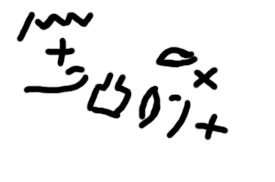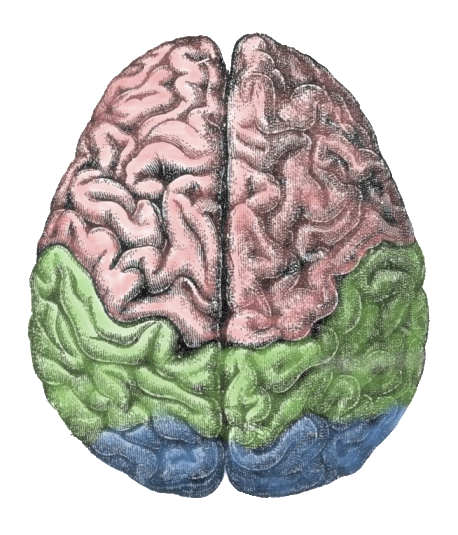 T
TThe history of writing instruments by which humans have recorded and conveyed thoughts, feelings and grocery lists, is the history of civilization itself. This is how we know the story of us, by the drawings, signs and words we have recorded.
 The cave drawings represented events in daily life such as the planting of crops or hunting victories With time, the record-keepers developed systematized symbols from their drawings. These symbols represented words and sentences, but were easier and faster to draw and universally recognized for meaning.
The cave drawings represented events in daily life such as the planting of crops or hunting victories With time, the record-keepers developed systematized symbols from their drawings. These symbols represented words and sentences, but were easier and faster to draw and universally recognized for meaning.The discovery of clay made portable records possible

(you can't carry a cave wall around with you). Early merchants used clay tokens with pictographs to record the quantities of materials traded or shipped. These tokens date back to about 8,500 B.C. With the high volume of and the repetition inherent in record keeping, pictographs evolved and slowly lost their picture detail. They became abstract-figures representing sounds in spoken communication.
The alphabet
 replaced pictographs between 1700 and 1500 B.C. in the Sinaitic world. The current Hebrew alphabet and writing became popular around 600 B.C.
replaced pictographs between 1700 and 1500 B.C. in the Sinaitic world. The current Hebrew alphabet and writing became popular around 600 B.C.About 400 B.C. the Greek alphabet was developed.
| |||
|---|---|---|---|
 | |||
So what effect has such developments had on the brain of ‘man’
It is said, that the left brain is specialized for processing information in a piecemeal, analytic and sequential manner. This happens to be good for verbal information. The right brain is good at processing information in an integrative, holistic manner. That's ideal for spatial information.
Popular authors spin ''just so'' stories describing how each side drives human behaviours and explains human foibles for a just-so story that purports to explain everything from the development of women's rights to monotheism, from witch burning to religious wars. These just so ‘writers’ do not squelch the idea that each side of the brain is monomaniacal n psychiatry, monomania (from Greek monos, one, and mania,mania) is a type of paranoia in which the patient has only one ideaor type of ideasfrom birth, that the right is feminine, mystical, quintessential yin and the left is masculine, orderly, utmost yang. Just so.
In ''The Alphabet Versus the Goddess,'' published last year by Viking Putnam, the argument is that the invention of the alphabet actually changed which half of the human brain was dominant.
The argument here is that a civilization's principal means of communication molds it more than the content' of the information, he writes. Before the invention of simple alphabets (defined as having fewer than 30 signs) images were the principal means of communication. After the alphabet was invented, however, the images gave way to linear sequencing. That meant that comprehension, instead of occurring in the right brain, began occurring in piecemeal fashion in the left brain.
It's here that Dr. Shlain (the author) makes QUITE A leap. The human nervous system, he says, was substantially rewired when people began reading alphabets. So using left and right brain dominance as a cultural metaphor to explain human history, he argues that goddess worship began to disappear from the ancient western world at about the same time alphabets were invented 5,000 years ago.
As alphabets evolved, the shift to the left brain reinforced so-called ''masculine values.'' For example the first creation myths to be written down in Babylonia elevated to supreme position a god who conquered and mutilated a goddess. When pure alphabets appeared -- he argues the first was invented by the Hebrews -- the shift was complete. New monotheistic religions (Judaism, Christianity and Islam) appear in the Western world saying that God is revealed by His words, sanctified in written form. Conceiving of a deity with no image prepares the way for abstract thinking that leads to law codes, dualistic philosophy and objective science.
Dr. Shlain attributes the differences between East and West to their different routes to literacy. Alphabet cultures value imageless gods, written laws, speculative philosophy, mathematics and theoretical science, he concludes. Ideographic cultures do not have imageless gods, rely on custom instead of law, don't value individuals and have a different attitude toward time.
So Confucianism, the author argus, which extols masculine values, began to thrive in China during the Sung Dynasty when their printing press was invented. (It's no coincidence that strips of linen used to make paper were also used to bind women's feet.) In the Arabian desert, Mohammed is given the gift of literacy by the grace of God, and within a couple of hundred years men are veiling their women and forbidding them to shop.
And in Europe the world went mad when Gutenberg invented his press. As more and more men became obsessed with the written word, they became increasingly sexist.
 What's happening now is that the modern world is turning left-brained literacy dominance upside down with the invention of photography, motion pictures, television and now computers. New media are reshaping styles of human cognition, he argues. Cyberspace is the movement of mind into another dimension in which the right brain has real clout.
What's happening now is that the modern world is turning left-brained literacy dominance upside down with the invention of photography, motion pictures, television and now computers. New media are reshaping styles of human cognition, he argues. Cyberspace is the movement of mind into another dimension in which the right brain has real clout. 
No comments:
Post a Comment